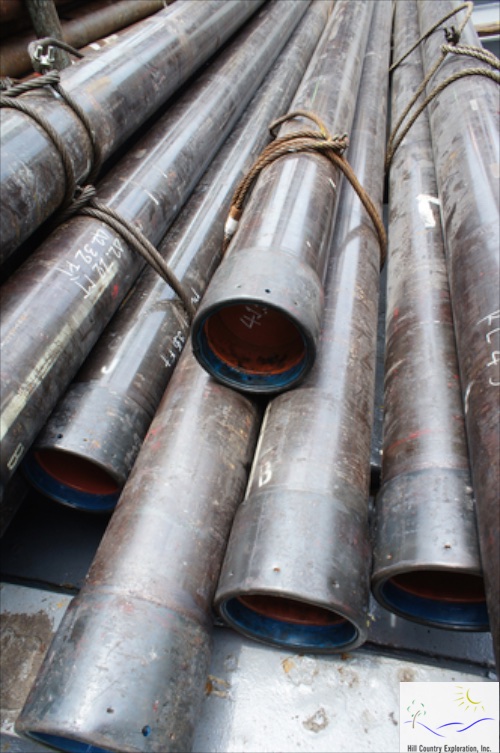The well completion process isn’t as simple as many people think. Once oil and gas companies identify the ideal placement of the wells, they need to drill down. However, this drilling process isn’t the end of a gas well completion. The drilling allows for access to the reservoir, but the structure of the ground isn’t stable enough to support the well system without some reinforcement, known as casing.
How Wells Are Cased
The casing used in wells are constructed with a four-step process:
- 40 foot sections are screwed together to form longer strings.
- The male threaded end of each casing section is joined to the next with short steel pipes with female threading, as well as thread compound to ensure a tight seal.
- The casing is then inserted into the drilled well. When inserting the first casing string, a rounded guide shoe is placed at the leading end to help guide the casing. Spring-like centralizers are located on the outside of the casing to ensure they are centered in the well shaft.
- Finally, the casing strings are hung to casing hangers at the top of the well to keep them in place.
Casing Programs
There are several methods of well completion when it comes to implementing casing. One of the most common methods requires drilling a hole to a specific depth and then casing it to that depth. The well is then extended further and cased again. At each depth, casing in a smaller width is used. The widest pipe is called the conductor pipe, which is typically between 30 and 42 inches in diameter in offshore wells and 16 inches in onshore wells. This casing is then followed by surface casing, which can run thousands of feet. The smallest casing is called the production or oil string.
In some situations where the well requires additional stability, protection or intermediate casing may be used. These are commonly needed in challenging areas, such as where oil pressure is high or there is a loss of circulation.
Casing a well is an important step in oil and gas well completion. While drilling the wells allows for easy access to the reservoirs located far below the Earth’s surface, it’s important to make sure they are stabilized to reduce the risk of a collapse. These steel pipes are connected together to create a seamless tube that will provide stability and allow the oil and gas to flow unimpeded through the well.
Look for the next installment of our informative blog series in September, when we’ll be discussing another important component of well completion. If you would like more immediate information on how oil and gas wells work, contact us. We are an oil and gas company helping investors like you take the plunge into this technical, yet lucrative industry.




